#coprinellus
Text




#moss#woods#forestcore#forest floor#fungi#mushrooms#green#forest photography#nature#naturecore#nature photography#latvia#original photographers#photographers on tumblr#inkcaps#coprinellus#marasmiellus ramealis#1k#2k
2K notes
·
View notes
Text
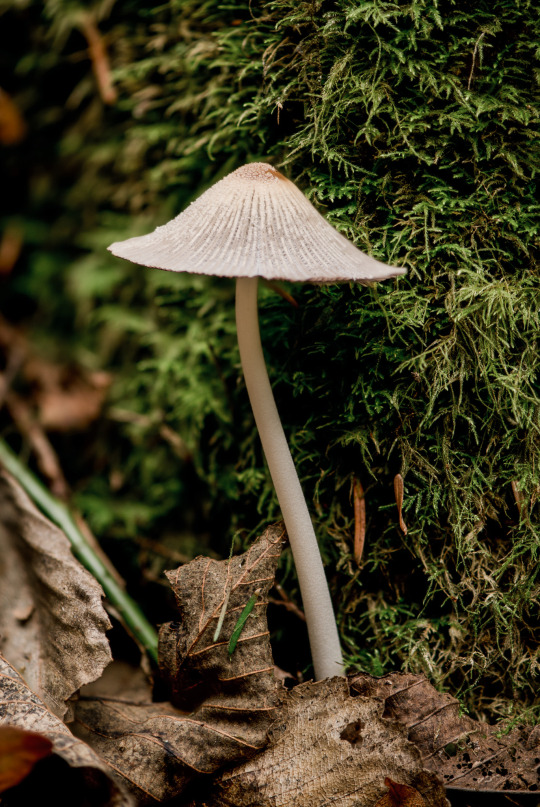
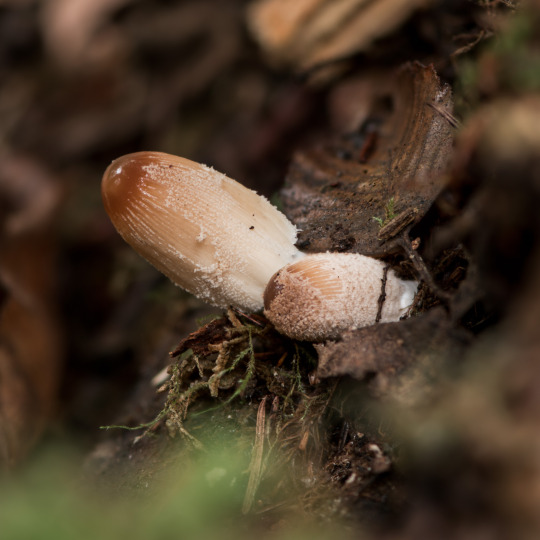
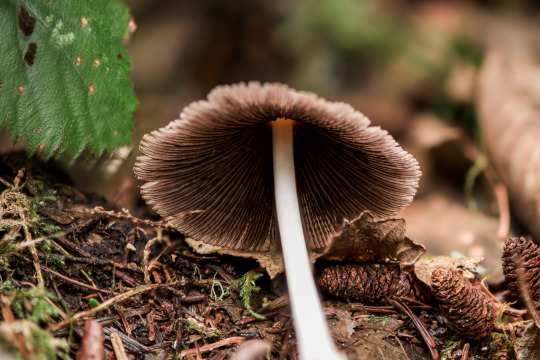

Coprinellus Mushrooms
#artists on tumblr#original photographers#original photography#hiking#pacific northwest#nature#nikon#orofeaiel#washington#pnw#goblincore#mushrooms#mycology#mycophile#forest finds#coprinellus
78 notes
·
View notes
Text



Mica Cap Mushrooms
Coprinellus sect. Micacei
Growing at the base of an old cottonwood tree in the woods.
April 3rd, 2024
St. Louis County, Missouri, USA
Olivia R. Myers
@oliviarosaline
#mycology#nature#woods#naturecore#forest#forest floor#missouri#ozarks#the ozarks#mushrooms#mushroom#wild fungi#fungi#Coprinellus#Psathyrellaceae#mica cap#mica capa#fairycore#cottagecore#the woods#exploring the woods#Missouri nature#ink caps#inky caps#wild mushrooms#nature walk#hiking missouri#mica cap mushrooms#Coprinellus micaceus#forestcore
35 notes
·
View notes
Text





Velvet foot, Flammulina velutipes, Aotearoa. Photo credit me.
Also some Coprinellus
#fungi#wild fungi#fungiphotography#velvet foot#flammulina#enoki mushrooms#coprinellus#ink cap mushroom
115 notes
·
View notes
Photo




Cambridge, UK, April 2023
Glistening inkcaps (Coprinellus micaceus)
These gorgeous little fungi grow in huge groups - you can’t see it here, but I’ve seen them cover the base of trees in groups half a metre across, comprised of hundreds of these tiny caps.
They start as pale brown caps, as you can see in the first photos, and turn grey-brown as they age. Though they are in the inkcap family, they don’t turn to ink as they mature like many of their relatives do, instead simply darkening and shriveling away as they release their spores.
Fairy inkcaps (Coprinellus disseminatus) are similar, but glistening inkcaps appear earlier in the year, start off brown rather than beige when young, and have tiny granules on the caps that fairy inkcaps lack.
#fungi#mycology#inkcaps#wild fungi#wild mushrooms#glistening inkcaps#coprinellus#Coprinellus micaceus#inedible fungi
114 notes
·
View notes
Text

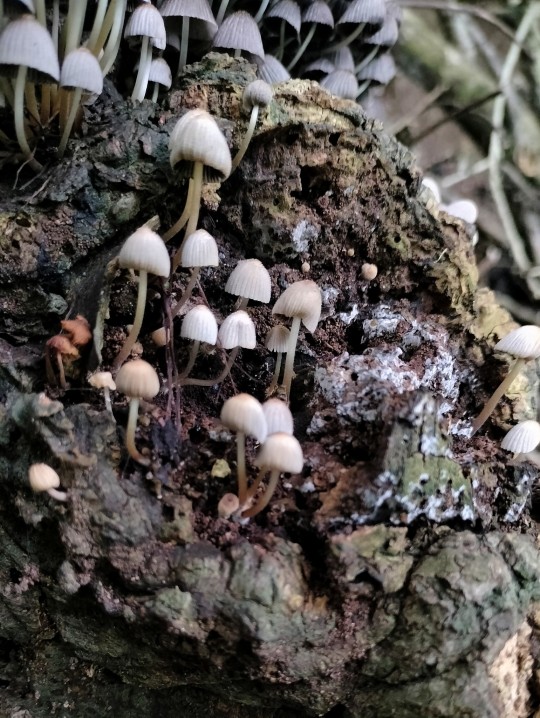



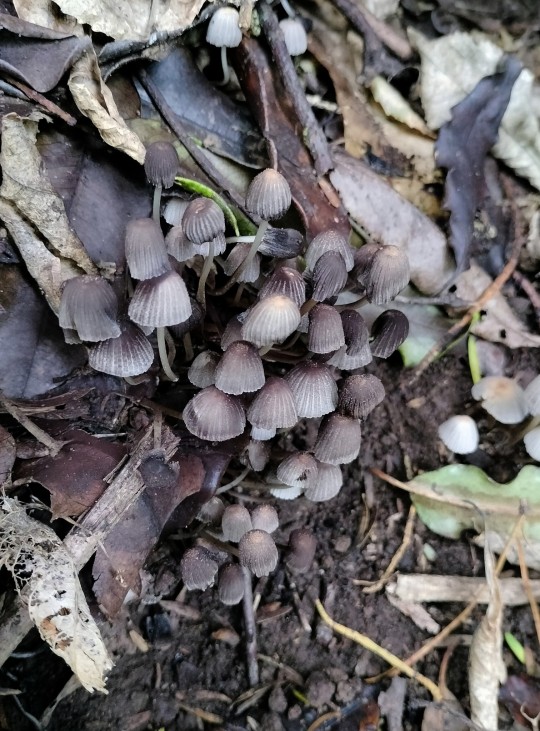
found myself in the ink cap kingdom on my walk home yesterday
122 notes
·
View notes
Text
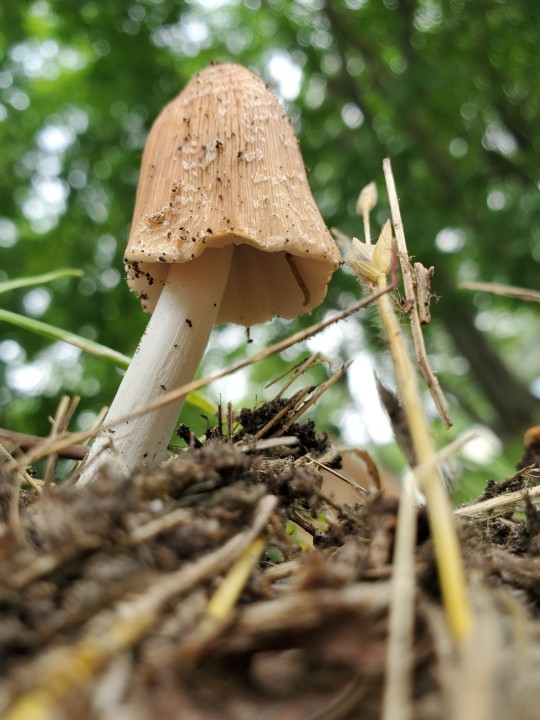

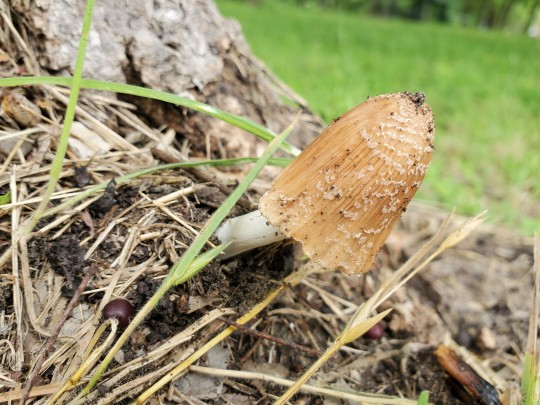
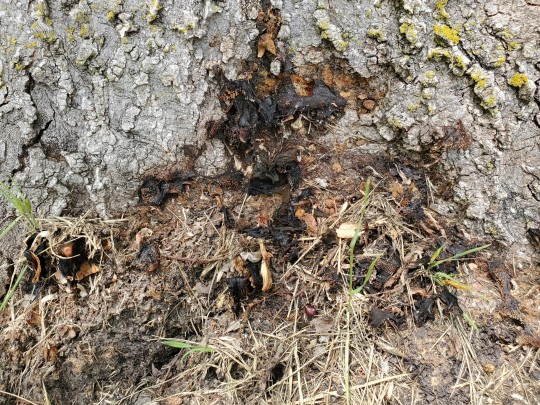
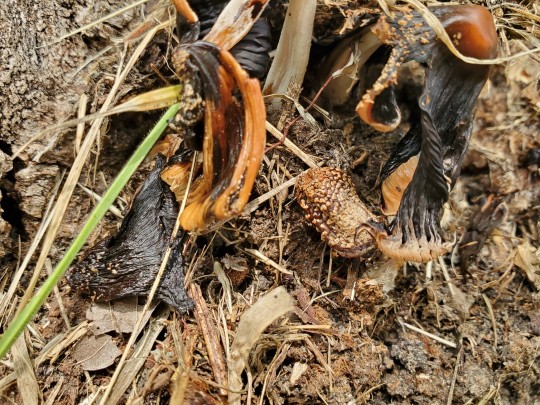
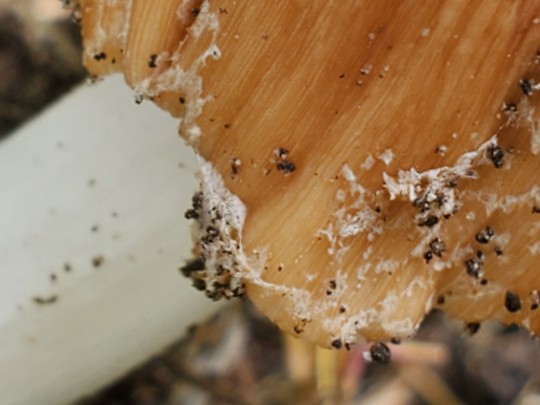



Firerug Inkcap 》 Coprinellus domesticus
Unfortunately I seem to have missed the main flush which had already deliquesced by the time I came by.
But I believe I can make out some remnants of the ozonium - the "fire rug" for which this species of inkcaps is named. This structure presents as a mat of orange, aboveground hypae which is not always present and may occur in the absence of mushrooms. It is possible they may also be Coprinellus radians as these are the only two species known to form ozonium and are visually indistuguishable except by their spore size.
Southeast Texas, 17 April 2024
#amatuer mycology#mushrooms#mycology#fungi#mushroom hunting#mushrooms of texas#texas mushrooms#wild fungi#fungi of texas#fungarium#foraging texas#foraging#fungus#inkcap#coprinellus#firerug inkcap#ozonium#hypae#special interest#mushroom species#fungus species#species identification#mushroom identification#wild mushrooms#mushroom#rot#decay#goblincore
12 notes
·
View notes
Text
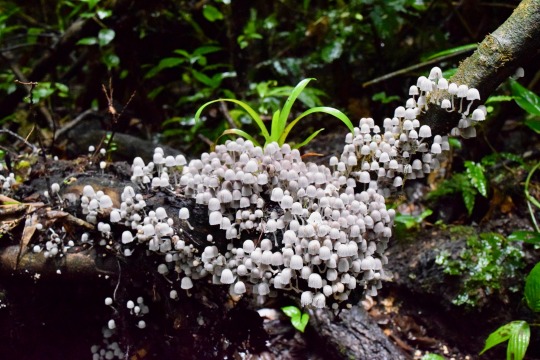
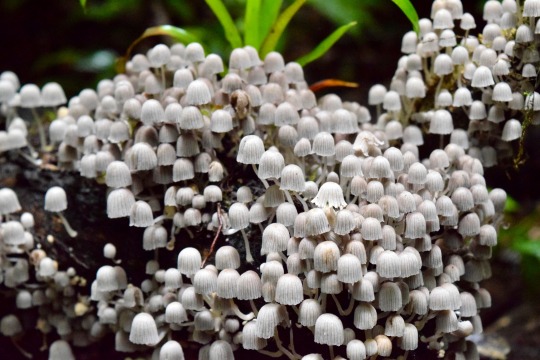
✨ some old gems ✨
#saw soooo many cool things on that trip 🥲#fungi#mushrooms#coprinellus disseminatus#coprinellus#fairy inkcap#mine#nature#naturecore#green#forest#outdoors#hiking#costa rica#original photography#original photographers
480 notes
·
View notes
Text
Ink Caps--Coprinus, Coprinopsis, and Coprinellus
They don't just grow in shit, I promise (in fact I don't think I've ever seen them growing in shit...). Photos are all mine, all unedited. The reason the ones of Coprinellus micacea look so much better is because of the lighting that time of day and also because I used my digital SLR camera. All the rest were taken with my old Moto G phone camera.
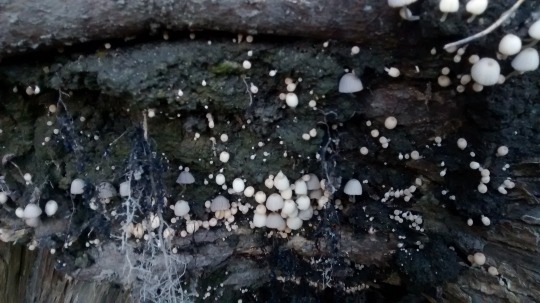

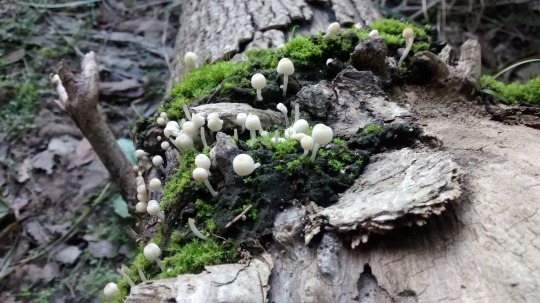
Coprinellus disseminatus, the fairy ink cap. They're edible but you'd need a lot of them because they're very small. Luckily they tend to be numerous! Good in soup or pasta sauce. They crumble really easily, so you want them in a paper bag you can easily shake them out of into a pan.






Coprinellus micaceus, the glistening ink cap. Also edible, and bigger than their aptly named cousins, but get 'em quickly and cook them because they will autodigest quickly and leave an inky mess. Good on pizza or in pasta sauce.


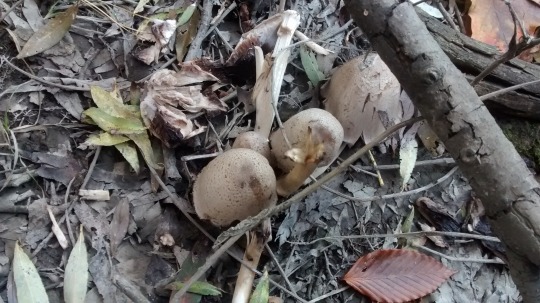
Coprinopsis atramentaria, the common ink cap. Edible as well and bigger than Coprinellus, but again you want to collect and cook those quickly. Good in pasta sauce. And the young ones specifically are really really good with mac and cheese, especially if you put fresh chives or green onions on top afterward.


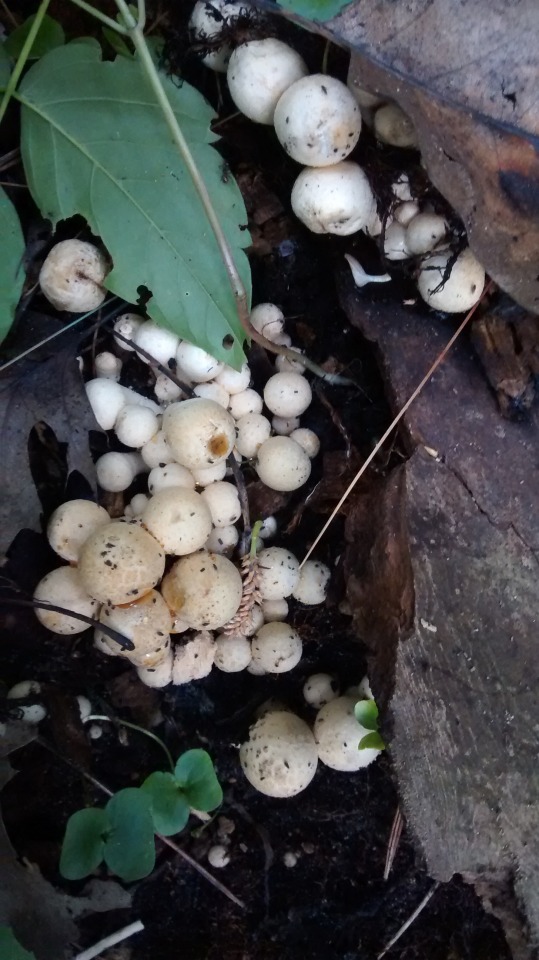
Coprinopsis variegata, the scaly ink cap. The young ones look an awful lot like puffballs. The older ones look like shaggy manes to the untrained eye. The scales will fall off with handling. These also are edible. Excellent in a creamy soup.
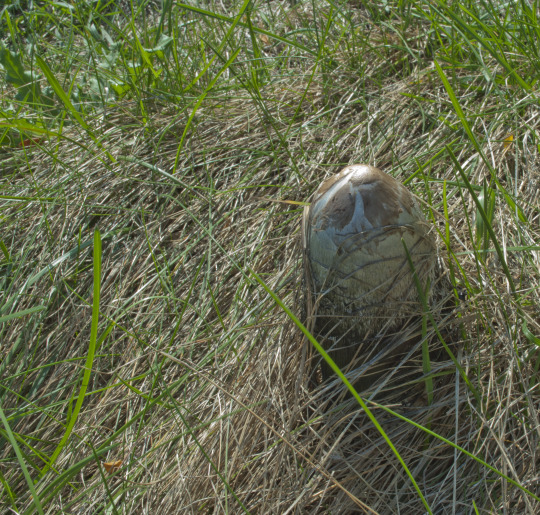


Coprinus comatus, the shaggy mane. Choice edible, but again, grab 'em quickly. Did you know my very first picture of a shaggy mane (left), I didn't even know it was a shaggy mane? Because I wasn't foraging yet. Good with pizza, in mushroom gravy, pasta sauce, or wherever else you'd want to use mushroooms. :)
Word of caution: ALL edible wild mushrooms need to be cooked. Even those that won't make you sick immediately can have longterm effects. Cook them and cook them well. You pretty much have to try to overcook a mushroom. So cook them properly.
A secondary word of caution: all edible ink caps with the exception of the shaggy mane don't react well with alcohol. The recommendation is that you don't consume ink caps within three days of having consumed alcohol, one way or the other. That being said, it does vary between individuals. I've been fine with no more than a few hours between a single drink and a meal with them in it.
Word of ethics: always leave at a third of the young mushrooms you find, and only in a large flush. If there's only one, leave it be.
And not so much caution, but for convenience: collect quickly and cook quickly. Some do it faster than others, but if you have mature specimens, they will autodigest into ink. Some people have used them as ink, if that's what you're after, go for it, but if you mean to actually eat them, you need to apply heat, as that disrupts that process. Another fun thing, though! If you get mature specimens that have only just begin to autodigest, you can cook them into a black sauce and even mix with flour to make black pasta!
#mushrooms#ink caps#Coprinellus#Coprinopsis#Coprinus#Coprinellus disseminatus#fairy ink cap#Coprinellus micaceus#glistening ink cap#Coprinopsis atramentaria#common ink cap#Coprinopsis variegata#scaly ink cap#Coprinus comatus#shaggy mane#wild mushrooms#edible mushrooms#edible wild mushrooms#my photos#photography#blackswallowtailbutterfly#fungi#foraging
4 notes
·
View notes
Text
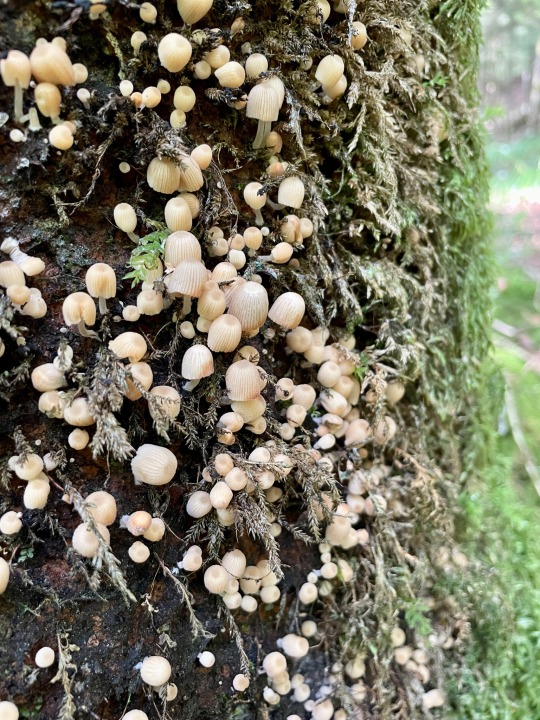

Gesäter Tintling, Coprinellus disseminatus
11.07.22
#mushrooms#pilze#mycology#fungi#wild fungi#mushrooms switzerland#pilz#mushrooms of switzerland#pilzesuchen#basidiomycota#coprinellus#tintling
102 notes
·
View notes
Photo


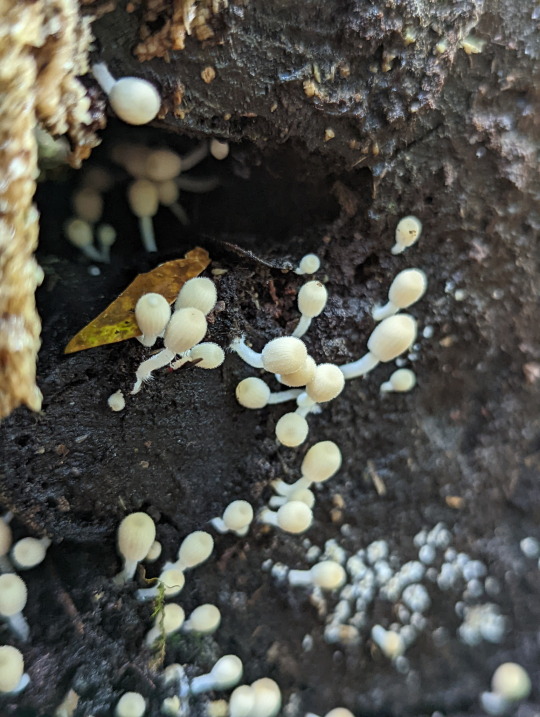
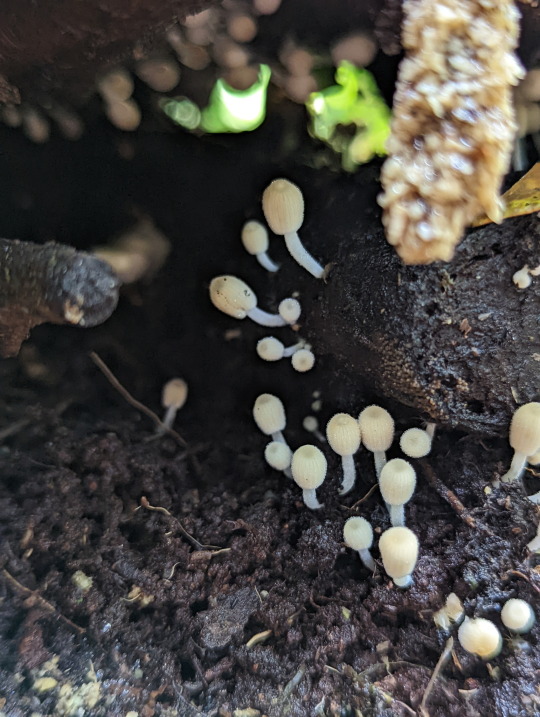
Coprinellus disseminatus, AKA Trooping Crumble Cap.
I always see these little mushrooms sprout up after rain ❤
04/05/22
#Coprinellus disseminatus#Trooping Crumble Cap#common gilled fungi#Disseminati#Coprinellus#Psathyrellaceae#Agaricineae#Agaricales#Agaricomycetidae#Basidiomycota#Agaricomycotina#Agaricomycetes#Fungi#fungus#mushrooms#mushroom#fungicore#mycology#natural#naturalist#nature#nature photography
31 notes
·
View notes
Photo


#mushrooms#fungi#mycology#mushroom photography#Coprinellus#inkcaps#nature#nature photography#original photographers#mica cap#Coprinellus micaceus#i think these are older darkened mica caps coz I found a cluster of yellow ones nearby#photographers on tumblr
760 notes
·
View notes
Photo

Coprinellus micaceus - Mica Caps +10p
Habitat: Usually seen growing in clusters from decomposing wood, rotting stumps, roots, and even buried wood. There are many similar lookalike species. You can find these year-round in the PNW region, but most abundantly come springtime.
Edibility: Edible! Described as watery, thin-fleshed, but otherwise tasty with medicinal qualities. Their habit of growing in clusters year-round make them an abundant option for a meal.
Spore Color: Dark brown to black
Gill Color: Gray becoming brown and soon deliquescing (liquidizing in age) into an inky black
Cap Color: Honey-brown or amber evolving to dark gray, striated partially to the center and distinguished by its coating of fine mica-like granules.
I need to know more!
#Coprinellus micaceus#Coprinellus#mushrooms#shrooms#mushroom#foraging#mushroom hunting#forests#ecology#environment#nature#outdoors#pnw#pacificnorthwest#mica caps#inky caps
44 notes
·
View notes
Photo


Mica Caps
Coprinellus micaceus
Western Washington, April 22, 2022
Mary Howerton (shop)
#mushrooms#fungi#fungus#shrooms#mushies#inky caps#mica caps#coprinellus#coprinellus micaceus#mycology#dirtcore#forestcore#cottagecore#goblincore#fairycore#naturecore#mosscore#original photography#photographers on tumblr#nature photography
10 notes
·
View notes
Text

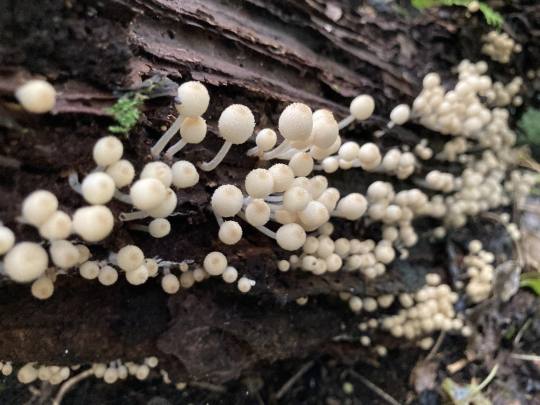
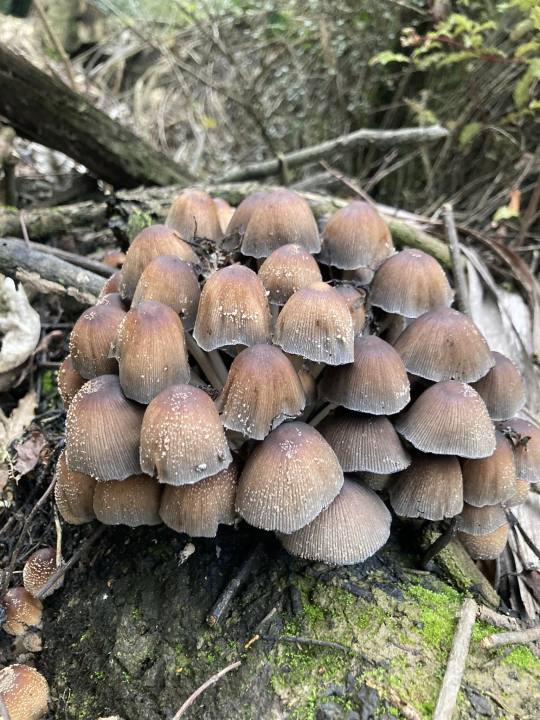

Various Coprinellus sp., Inkcaps, Aotearoa. Photo credit me.
Here are some from over the past few months. The last photo is definitely not my best work, but oh well. I really wanted to get both the white and dark grey ones in focus but it didn't really work properly :((
Inkcaps are so called because, once they mature or are damaged/picked, they release an enzyme that causes a process called auto-phagicytosis, or self-digestion. The gills and cap then dissolve themselves into a thick foul tasting black substance, that you can use as ink!
I always look out for them so I can send them to @coprinellus-cluster hehe.
18 notes
·
View notes
